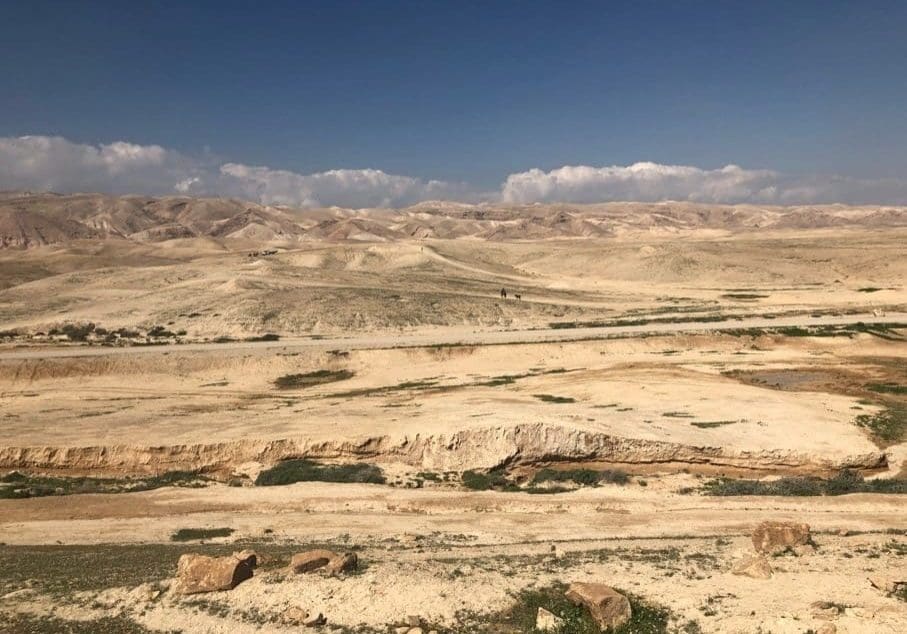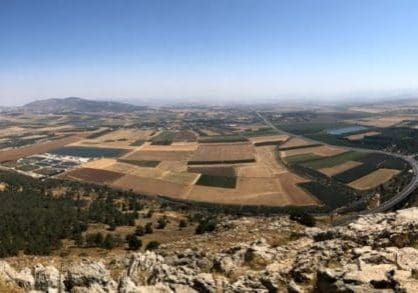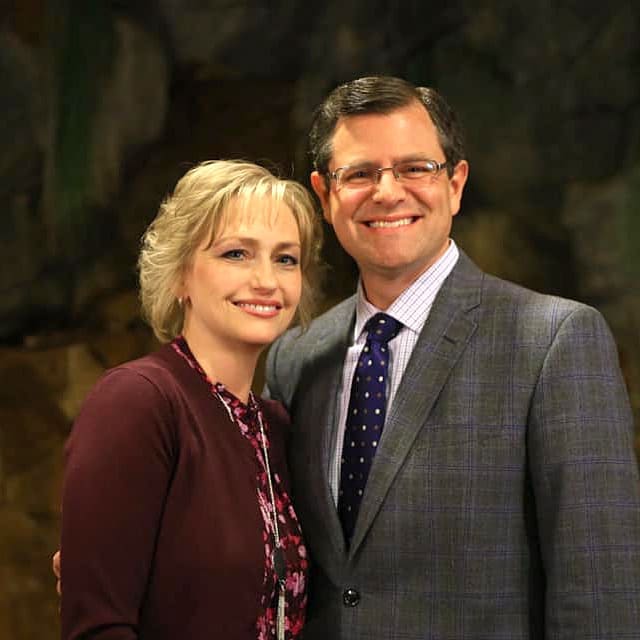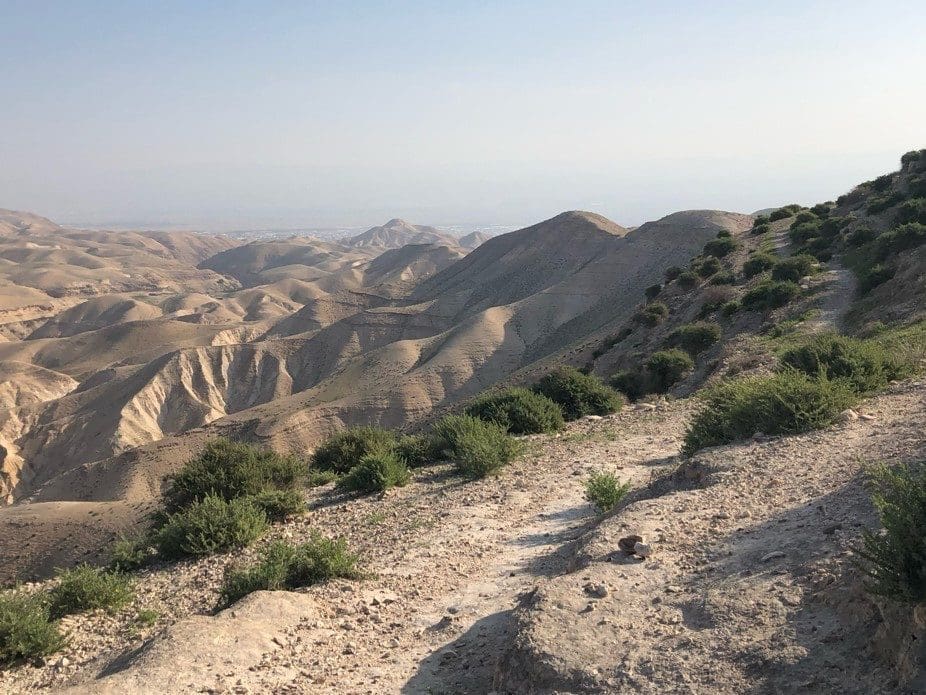
“He restoreth my soul: he leadeth me in the paths of righteousness for his name’s sake” (Psalm 23:3).
As a shepherd from the wilderness south of Bethlehem, David wrote about one of the most salient characteristics of the hills in those barren lands: the magal. Residents of the deserts of the holy land understand it to refer to the confusing web of paths that grazing flocks leave behind wherever they graze in the wilderness. In the wild lands of Israel, sheep and goats graze along thousands of interconnected trails that terrace the land. These grazing paths are ubiquitous and are a necessary part of any description of the wilderness of Israel.
The magal provides the grazers with stable footing, and they are separated by how far a sheep or goat can stretch its neck. As such, most of the paths do not lead anywhere in particular, despite some of them being quite substantial. So, as you traverse the mountains, you can easily get diverted from your hiking trail and get lost. When you do finally realize your error, finding your intended path again usually requires backtracking. In the deserts of Israel, the hills frequently look identical, and many of the canyons and valleys are blocked by rockfalls which impede travel. In this maze, finding the right magal out can be difficult.
In contrast to this, the Good Shepherd leads His flock in paths of righteousness. We do not have to worry about getting lost when we are following Him. In the confusing tangle of paths that lead through life, we can be sure that He knows which one is correct. We just need to confidently follow Him and His voice (John 10:4).
However, the people of Israel forgot their God, ignored His warnings, and followed idols. Another resident of the desert, the prophet Jeremiah, castigated them for it. He wrote of them as sheep who had followed after a deceitful shepherd.
“My people hath been lost sheep: their shepherds have caused them to go astray, they have turned them away on the mountains: they have gone from mountain to hill, they have forgotten their restingplace” (Jeremiah 50:6 ).
Are you a follower of Jesus the Great Shepherd? Or are you following after a false shepherd who is leading you further from rest in the confusing web of magal? If you are a lost sheep, astray on the mountains following a false shepherd, please come to Jesus. He wants to rejoice over you as a lost sheep that has been found. (Luke 15:6) He is who leads us in the magal of righteousness. Our attempts to walk in those paths without His guidance will not work.
If you are already a believer, but have strayed from following your Shepherd, know that He stands ready to restore your soul, and to once again lead you in the paths of righteousness.
“All we like sheep have gone astray; we have turned every one to his own way; and the LORD hath laid on him the iniquity of us all” (Isaiah 53:6).
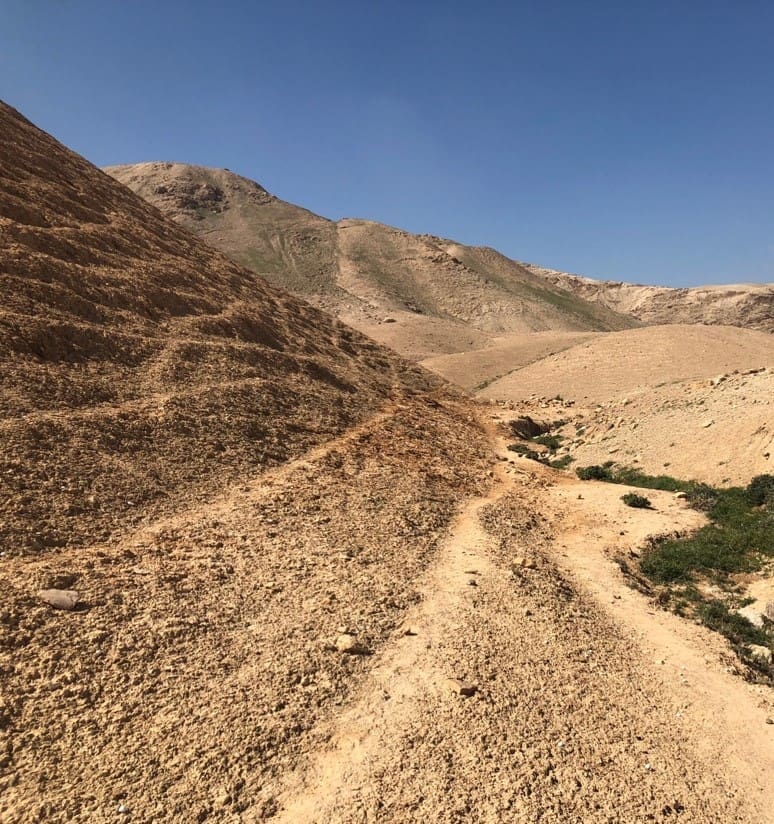
When we come to a fork in the path, such as this one in the Judean Wilderness above Jericho, we can be sure that our Shepherd knows the way.
Photo by John Buckner

